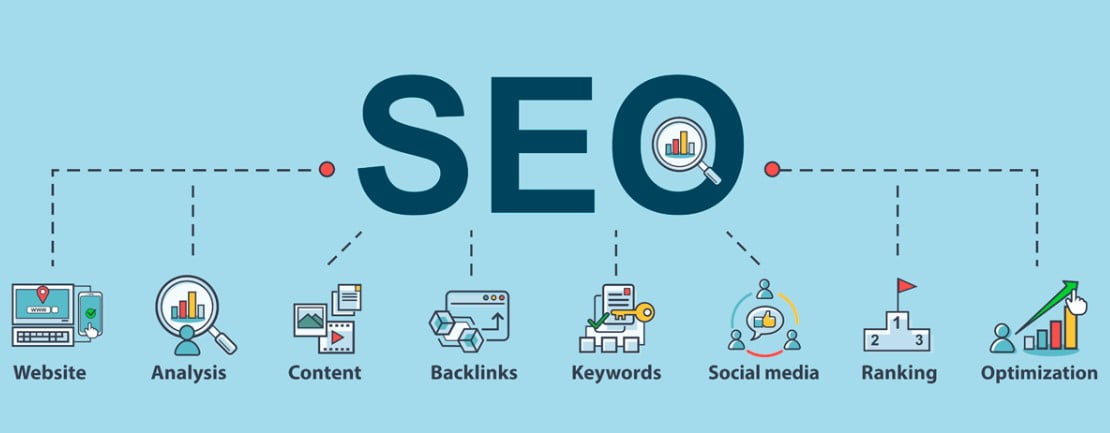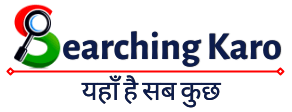What are main types of SEO?
- Technical SEO outline: This type of outline focuses on the technical aspects of the website, such as site structure, speed, and mobile responsiveness. It aims to improve the website’s visibility and accessibility to search engines.
- On-page SEO outline: This type of outline focuses on optimizing individual web pages to rank higher in search engine results pages (SERPs). It involves optimizing the content, meta tags, headings, images, and other on-page elements.
- Off-page SEO outline: This type of outline focuses on optimizing the website’s visibility and reputation outside of the website itself. It includes strategies such as link building, social media marketing, and content marketing.
- Local SEO outline: This type of outline is designed to help businesses rank higher in local search results. It includes strategies such as optimizing the website for local keywords, creating local business listings, and getting reviews from customers.
- E-commerce SEO outline: This type of outline focuses on optimizing e-commerce websites to improve visibility and drive more traffic and sales. It includes strategies such as optimizing product descriptions, creating a user-friendly checkout process, and improving site speed and mobile responsiveness.
Technical SEO outline:
- Website structure: This involves analyzing the website’s structure and organizing the content in a logical and hierarchical manner to improve the user experience and help search engines crawl and index the site more effectively.
- Site speed and performance: This involves optimizing the website’s loading speed, minimizing server response time, and reducing page load times to improve user experience and search engine rankings.
- Mobile responsiveness: This involves ensuring that the website is optimized for mobile devices, such as smartphones and tablets, to improve user experience and search engine rankings.
- URL structure: This involves creating a clear and concise URL structure that includes relevant keywords and is easy for users to understand and remember.
- XML sitemap: This involves creating an XML sitemap that lists all of the pages on the website and helps search engines crawl and index the site more effectively.
- Robots.txt file: This involves creating a robots.txt file that tells search engines which pages on the website should not be crawled or indexed.
- Canonicalization: This involves setting up canonical tags to ensure that search engines understand which version of a page is the primary version and should be indexed.
- Structured data: This involves adding structured data to the website’s code to help search engines understand the content and context of the site’s pages.
- HTTPS: This involves securing the website with HTTPS to improve security and user trust, as well as to potentially improve search engine rankings.
By addressing these elements in a technical SEO outline, website owners and marketers can improve the visibility and accessibility of their website to search engines and users alike.

On-page SEO outline:
- Keyword research: This involves identifying relevant keywords and phrases that users are searching for and optimizing the website’s content to target those keywords.
- Title tags: This involves creating unique and descriptive title tags for each page on the website that include the target keyword and accurately describe the content of the page.
- Meta descriptions: This involves creating compelling and informative meta descriptions for each page on the website that encourage users to click through to the page from search engine results pages.
- Heading tags: This involves using heading tags (H1, H2, H3, etc.) to organize the content on the page and to indicate the most important topics and subtopics.
- Content optimization: This involves optimizing the website’s content, including text, images, and videos, to ensure it is relevant, informative, and engaging for users.
- Internal linking: This involves linking to other relevant pages on the website to improve navigation and user experience, as well as to help search engines crawl and index the site more effectively.
- Image optimization: This involves optimizing images on the website with alt tags and descriptive filenames to help search engines understand the content of the images.
- URL optimization: This involves creating short, descriptive, and keyword-rich URLs for each page on the website.
- User experience: This involves ensuring that the website is easy to navigate, visually appealing, and mobile-friendly to improve user experience and engagement.
By addressing these elements in an on-page SEO outline, website owners and marketers can improve the relevance and quality of their website’s content and improve the site’s visibility and rankings in search engine results pages.
Off-page SEO outline:
- Link building: This involves acquiring high-quality backlinks from reputable and authoritative websites to improve the website’s domain authority and search engine rankings.
- Social media marketing: This involves using social media platforms, such as Facebook, Twitter, and LinkedIn, to promote the website’s content and engage with users.
- Content marketing: This involves creating and sharing high-quality content, such as blog posts, infographics, and videos, to attract and engage users and to earn backlinks from other websites.
- Local SEO: This involves optimizing the website for local search results by creating local business listings, getting reviews from customers, and targeting local keywords.
- Online reputation management: This involves monitoring and managing the website’s online reputation, including reviews, mentions, and social media activity, to improve user trust and credibility.
- Influencer marketing: This involves collaborating with influential individuals or organizations in the industry to promote the website and its content to a wider audience.
- Guest blogging: This involves writing guest blog posts for other websites in the industry to earn backlinks and increase the website’s visibility and authority.
By addressing these elements in an off-page SEO outline, website owners and marketers can improve the website’s visibility, authority, and reputation outside of the website itself, which can help to drive more traffic and improve search engine rankings.
Local SEO outline:
- Google My Business: This involves creating and optimizing a Google My Business listing, including adding accurate business information, such as the business name, address, phone number, hours of operation, and photos.
- Local keyword research: This involves identifying relevant local keywords, such as “near me” or “in [city name],” and optimizing the website’s content to target those keywords.
- Localized content: This involves creating high-quality, localized content, such as blog posts or landing pages, that are specifically targeted to the local audience.
- Local business directories: This involves submitting the website’s information to local business directories, such as Yelp or Yellow Pages, to improve visibility and local search rankings.
- Online reviews: This involves encouraging customers to leave online reviews, such as on Google My Business or Yelp, to improve online reputation and search engine rankings.
- Local link building: This involves building high-quality local backlinks from other local businesses, organizations, or media outlets to improve domain authority and search engine rankings.
- Mobile optimization: This involves optimizing the website for mobile devices, such as smartphones and tablets, to improve user experience and search engine rankings.
By addressing these elements in a local SEO outline, businesses can improve their visibility and rankings in local search results, which can help drive more traffic and increase conversions from local customers.
E-commerce SEO outline:
- Keyword research: This involves identifying relevant keywords and phrases that users are searching for and optimizing the website’s product descriptions and categories to target those keywords.
- Site structure: This involves organizing the website’s product categories and subcategories in a logical and intuitive manner, with clear navigation and a user-friendly interface.
- Product descriptions: This involves writing unique, detailed, and informative product descriptions that include the target keywords and accurately describe the features and benefits of the products.
- Image optimization: This involves optimizing product images with descriptive filenames and alt tags to help search engines understand the content of the images.
- User-generated content: This involves encouraging customers to leave reviews and ratings for products to improve social proof and user engagement.
- Schema markup: This involves using structured data markup to provide additional information about products, such as prices, ratings, and availability, to search engines.
- Site speed: This involves optimizing the website’s loading speed to improve user experience and search engine rankings.
- Internal linking: This involves linking to other relevant products and categories on the website to improve navigation and user experience.
- External linking: This involves building high-quality backlinks from other reputable websites to improve domain authority and search engine rankings.
By addressing these elements in an e-commerce SEO outline, businesses can improve the visibility and accessibility of their products in search engine results pages, which can help to drive more traffic and increase sales.


